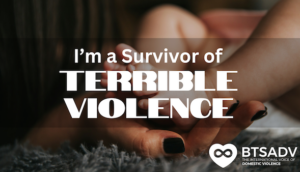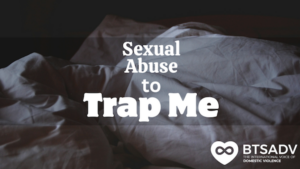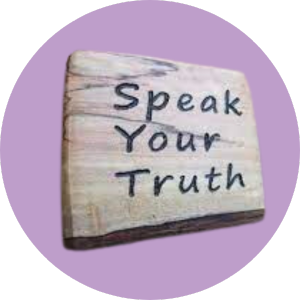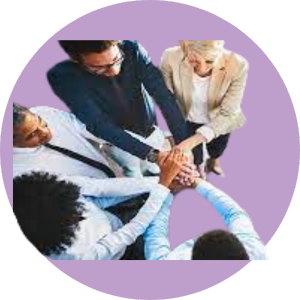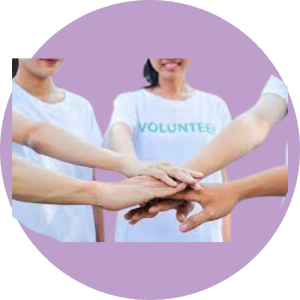June is Post-Traumatic Stress Disorder (PTSD) awareness month, so we’re going to take a look at what it is, some of the triggers, how it can affect us, and where we can begin the healing process. The American Psychiatric Association defines PTSD as “a psychiatric disorder that can occur in people who have experienced or witnessed a traumatic event such as a natural disaster, a serious accident, a terrorist act, war/combat, rape or other violent personal assault.” They go on to say, “People with PTSD have intense, disturbing thoughts and feelings related to their experience that last long after the traumatic event has ended”. For some, PTSD occurs after just one unpredictable catastrophic event, for domestic violence victims, it comes through a stream of traumatic interactions with their abusers over days, weeks, months, or years.
What exactly constitutes a “traumatic event”? Merriam-Webster defines trauma as “a…behavioral state resulting from severe mental or emotional stress”. It’s important to note that being exposed to verbal, psychological, emotional, financial, and spiritual abuse qualifies as trauma. Emotional scars can be some of the trickiest to navigate because we cannot see or touch them, we can only feel them. But survivors see the effects of these invisible scars when they struggle to cope, create positive change, or heal their internal world once they’re free of their abusers. This is a very normal part of the transition out of domestic violence, and every survivor can find hope in the fact that they are not alone. There are studies, research, and resources all over the world to help survivors transform their trauma into their superpower.
Finding Hope
Understanding how trauma and post-traumatic stress can impact a person is a constantly evolving endeavor. In her book Invisible Heroes, Belleruth Naparstek says, “…heroes are people who do good or necessary things at great personal cost… That’s why trauma…produces heroes.” She lists the “shortlist” of PTSD symptoms: “flashbacks, nightmares, intrusive thoughts, agitation, numbness, insomnia, irritability, depression, concentration problems, anxiety, panic, shame, guilt, temper, estrangement, and sudden startling”.
Naparstek goes on to dictate several key variables to whether a person will develop PTSD after experiencing a traumatic event. This includes proximity, duration, extent of brutality, betrayal, threat of dying, perpetuating violence, societal context, unpredictability, injury, loss, and being trapped. In short, PTSD is prevalent in the world of domestic violence, but it is a condition not an indicator of a person’s identity. This distinction is the difference between survivors being able to find hope or losing themselves in the wake of the trauma they have experienced.
Healing Is Not a Linear Process
Let’s talk about what that hope really looks like. There is no formula when it comes to healing. Survivors should take comfort in freely exploring their own unique healing journey without trying to be, do, act, or follow any linear process. Emotional healing is circular, meaning it won’t always look like you’re getting from Point A to Point B and then to Point C. Sometimes you’ll go from Point A to Point D then back to Point B and revisit Point A for a deeper level of awareness. Healing trauma is no different and embracing the process instead of focusing on a certain end game will serve to soften survivors and allow them to heal more quickly.
Here are the five rituals I recommend to my trauma survivor clients (in no particular order):
1. PTSD-specific treatments.
While talk therapy may not always be the most effective method of healing for trauma victims–because it can cause triggering and reliving the experience(s)–EMDR, brain spotting, and other subconscious therapy modules can be highly effective. Search your area for professionals who have had extensive training in these areas. Don’t be afraid to ask questions to make sure you are comfortable with their treatment suggestions and feel they are a good fit for you.
2. Focus on finding stability.
Take the pressure off of yourself for having to be somewhere or something you may not be today. Keep your goals, intentions, and focus on establishing healthy relationships, income, home environment, and peace of mind for yourself. The simpler, the better as you begin healing post-traumatic stress syndrome.
3. Breathwork and meditation.
Take your pick on breathwork guides. Youtube has millions to help you get started. I recommend Wim Hof’s 10 min Breathing Exercise for my clients who are just beginning. Guided meditations are also an extremely powerful tool for survivors. The Health Journeys App is my favorite resource for this as they have an extensive catalog of PTSD, trauma healing, and self-love meditations.
4. Deep self-care.
These are simultaneously relaxing and rejuvenating rituals like journaling, yoga, sipping tea, taking an Epsom salt bath with essential oils, body brushing, breathwork, meditation, etc. Anything that allows you to connect with YOU more deeply. This is where you begin studying your triggers, reactions, needs, feelings, boundaries, etc. I have an online course that will walk you through everything you need to know to learn how to nurture yourself.
5. Choosing consciousness.
YOU are not a sum of the trauma you have experienced. Trauma (PTSD) is part of your story, but there is so much more to who you are. Be mindful of giving yourself grace and embracing this next step in your story–to heal, be kind to yourself, and take all the time you need to find YOU again. Listen to podcasts on relationships, finances, self-love, personal development. Make yourself the priority and practice thinking about your thoughts. This is consciousness. This online course is a wonderful tool for unlocking your power through conscious living.
Rebuilding Our Lives
As with any form of social-emotional care, implementing these new responses when you feel triggered will take time and practice. It’s important to focus on becoming more aware through each trigger and each ritual of care instead of fixating on why you’re still reacting to certain triggers. Once you are in a calm state of mind, ask yourself, “What did I do well? What do I want to do differently? How can I remember what I want to do when my nervous system is locked up by my trigger again?” It is very helpful to practice these responses when you’re not feeling reactive so that they become habitual for you and second-nature when you find yourself in the middle of an old trauma sensation.
Survivors of trauma do not have to keep experiencing the paralyzing effects of PTSD. There are many available tools online. Such as trained professionals around the world, numerous books, apps, and other resources designed specifically for trauma survivors. We have so much power. One next right step at a time, we can find relief from the emotional turmoil, reconnect neural pathways destroyed by traumatic events. We can learn to rebuild our lives with confidence.
